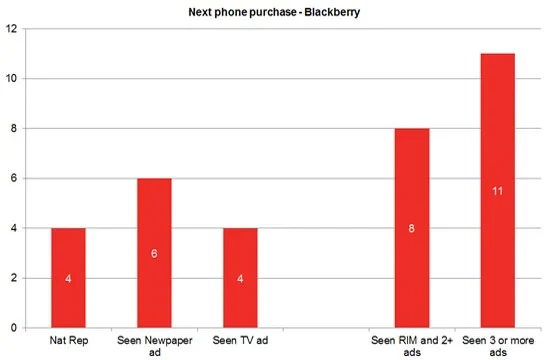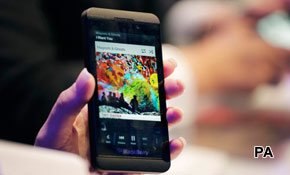YouGov CEO, Stephan Shakespeare, discusses the example of BlackBerry and suggests that it should spread its TV adverts far and wide.
ADVERTISERS have always known that adverts influence viewers’ perceptions even when they are not consciously remembered. Last week in this column I revealed evidence of this so-called Higgs-Boson for marketeers – proof that advertising influences people even when it is not recalled.
Yet while this is great news for the advertising industry, there is a downside – it makes measuring effectiveness (and therefore optimising spend) more difficult.
I promised that I would look at a specific campaign to show how this can be done using connected panel data – merging precise media consumption with changes in brand perception. So here’s the example:
When BlackBerry launched the Z10 earlier this year it was a crucial initiative in reversing a steep downward trend on nearly all perception and behaviour measures – BlackBerry’s net promoter score has fallen from plus 33 to minus 15 in three years. I’ve looked at RIM’s advertising campaign focussing in on TV and print to identify how it is faring and which ads are working best. I’ve looked at people who have been exposed to specific ads – through media consumption data we know who was watching the TV shows during which the adverts played – to see how their attitudes and behaviours towards Blackberry may have changed.
To assess success I have focused on purchase intent. At first glance the impact is fairly limited, but when we zero in on specific ads the impact becomes larger and the story changes. Seeing a RIM ad (rather than those run by the retailers and networks) and seeing the ad multiple times both had a significant impact on purchase intent. Remember, these are not people who said they remembered seeing the ad, but those we know were watching the TV shows the ads were on. If someone saw the ad three times or more, purchase intent rises from four per cent to 11 per cent.

So the campaign has started to make progress, but to realise its full potential RIM needs to get the TV ad seen by more people. By using connected data the company can know which advertising strategies work best, and optimise its spend.









